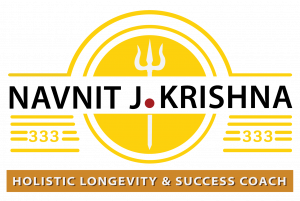The Inner Path: Achieving Material and Spiritual Harmony Through Yogic Wisdom
By Dr. Navnit J Krishna
Introduction :
In a world driven by material aspirations, spiritual fulfillment often feels like a distant dream. However, ancient yogic wisdom teaches us that material success and spiritual harmony are not opposing forces but complementary goals. This Article explores how timeless practices from Tantra, Kashmir Shaivism, and Siddha philosophy can guide us toward a balanced and fulfilling life.

The Dual Pursuit of Success :
The ancient Indian tradition identifies four life goals (purusharthas):
- Dharma: Living ethically and fulfilling responsibilities.
- Artha: Gaining material prosperity.
- Kama: Satisfying desires in a balanced way.
- Moksha: Attaining liberation and inner peace.
A harmonious life integrates all these aspects, achieving material wealth while nurturing the soul.
Awakening Kundalini Energy :
The Kundalini Shakti, a dormant spiritual energy, lies coiled at the base of the spine. When awakened through yogic practices, it ascends through the chakras, illuminating the path to self-realization.
Practices to Awaken Kundalini:
1.Daily meditation focusing on the muladhara (root chakra)
2.Breathing exercises (pranayama) to channel energy upward.
3.Visualization techniques inspired by Tantra traditions.
Kundalini awakening symbolizes the union of Shiva (pure consciousness) and Shakti (dynamic energy), leading to both worldly and spiritual empowerment.
Lessons from Kashmir Shaivism :
Kashmir Shaivism, a profound school of Indian philosophy, emphasizes recognizing the self as the universal consciousness.
Core Principles:
- Spanda: The subtle vibration underlying all creation.
- Pratyabhijna: Realization of one’s divine nature.
- Shiva and Shakti: Unity of the static and dynamic forces of existence.
Through awareness practices, one can perceive the divine in every moment and action.
Practical Yogic Techniques for Modern Life :
Simple, accessible practices can help integrate spiritual principles into a busy life:
1.Morning Routine: Begin with a five-minute meditation focusing on your breath.
2.Daily Mantra: Recite “Om Namah Shivaya” to center your mind.
3.Evening Reflection: Write down three things you are grateful for, aligning with the principle of dharma.
Yoga Asanas for Balance:
- Tadasana (Mountain Pose): Improves focus and stability.
- Bhujangasana (Cobra Pose): Opens the heart center, fostering resilience.
Overcoming Obstacles on the Path :
Obstacles such as distractions, self-doubt, and attachment often hinder spiritual growth. Insights from Siddha philosophy teach us to navigate these challenges through discipline and surrender.
Key Strategies:
- Detachment from outcomes.
- Focused intention during spiritual practice.
- Seeking guidance from a trusted teacher or mentor.
The Bliss of Liberation :
Liberation (moksha) is not about renunciation but realizing freedom within life’s responsibilities. Kashmir Shaivism describes liberation as living in the awareness of one’s divine nature, even amidst worldly pursuits.
Achieving Liberation:
1.Recognize every action as an expression of the divine.
2.Meditate daily to quiet the mind and deepen awareness.
3.Serve others selflessly, embodying dharma.
Conclusion: Your Journey Begins
Success in both material and spiritual life is not about achieving perfection but embracing the journey. With dedication and consistent practice, you can awaken the divine potential within, achieving harmony between the outer and inner worlds.

